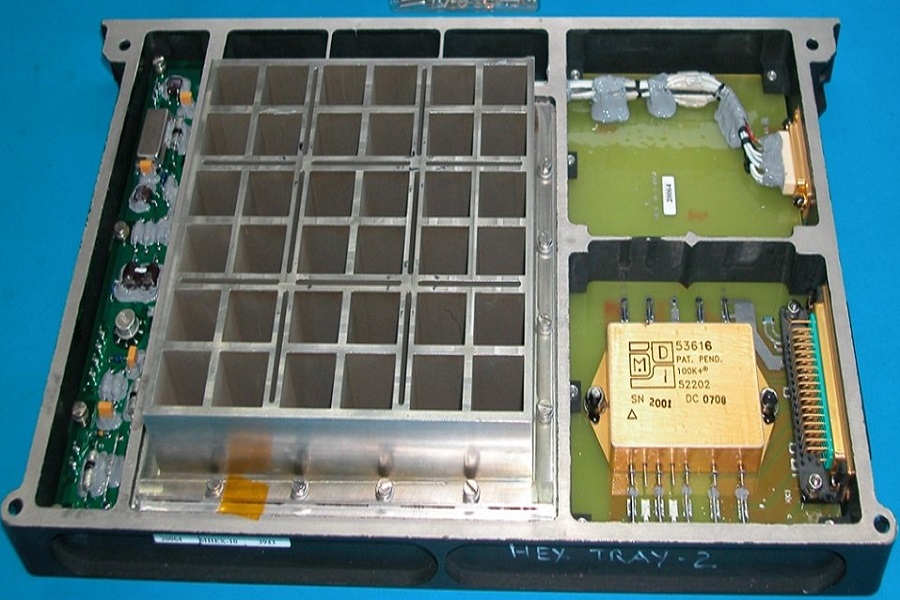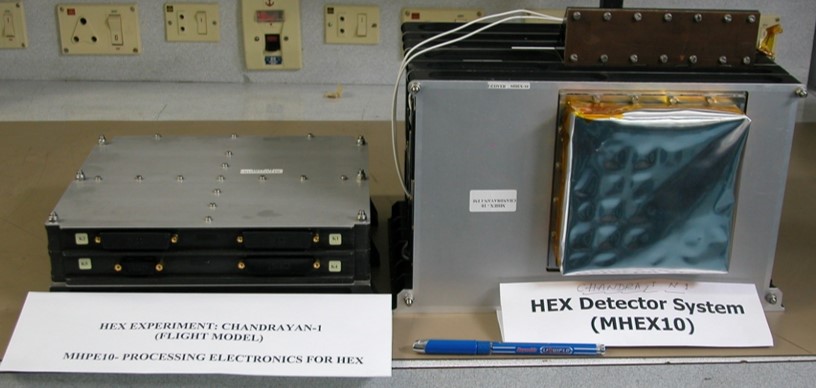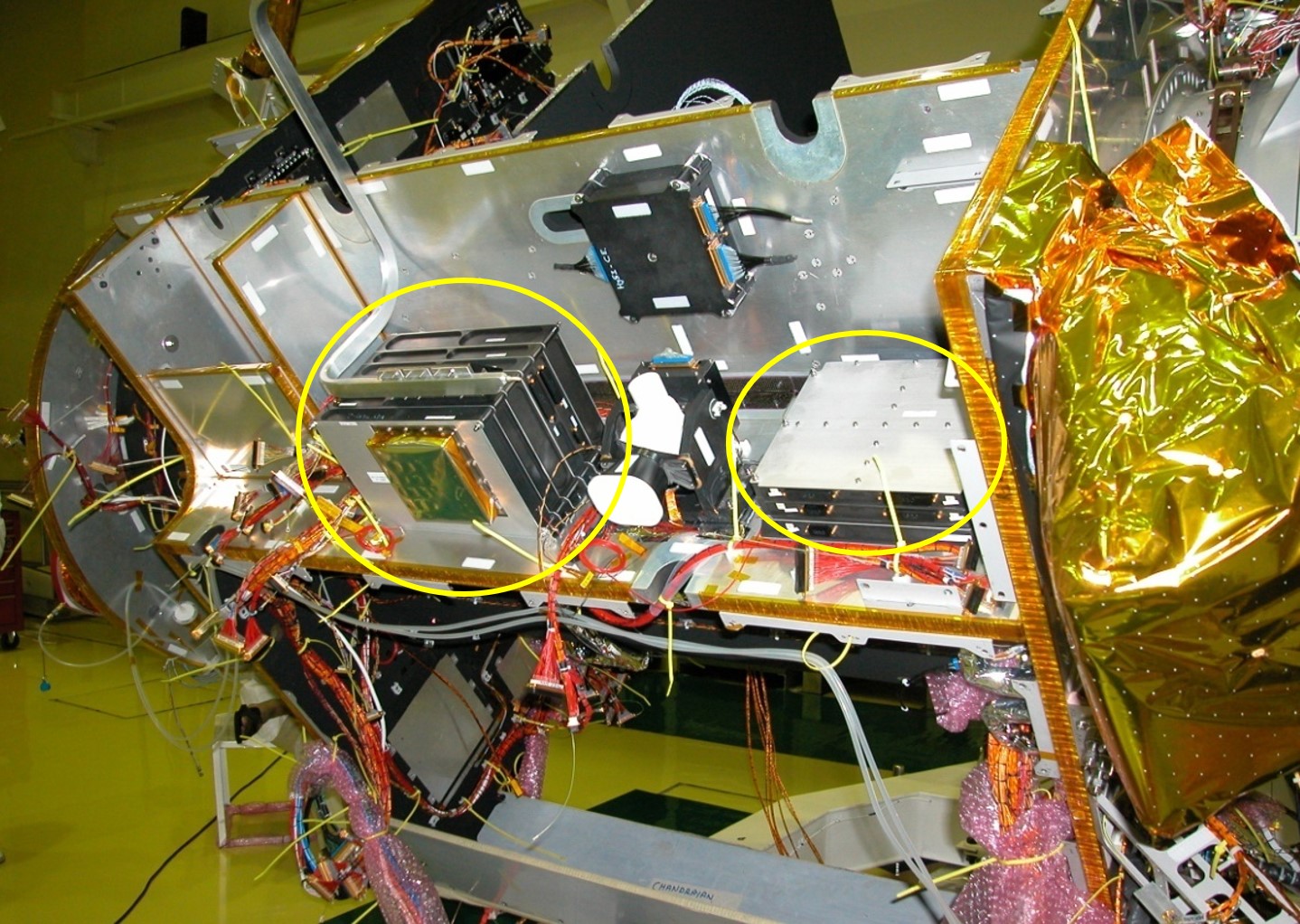High Energy Spectrometer
Chandrayaan-1, India's first planetary exploration mission to Moon carried a suite of payloads including a High Energy X-ray spectrometer (HEX) designed to study low-energy ( 30–270 keV) natural gamma rays emitted from the lunar surface due to decay of uranium and thorium. The primary science objective of HEX was to study transport of volatiles on the lunar surface through the detection of the 46.5 keV line from 210 Pb decay, which is a decay product of volatile 222 Rn, both belonging to the 238 U decay series. HEX was designed to have a spatial resolution of ~33 km at energies below 120 keV. The low signal strength of these emissions requires a large area detector with high sensitivity and energy resolution, and a new generation Cd–Zn– Te (CZT) solid state array detector was used in this experiment.
Project information
- Mission: Chandrayaan-1
- Launch date: 22 October, 2008
- Project URL: https://www.isro.gov.in/Spacecraft/chandrayaan-1


